

Informationen Medikamente. Hetzner : Manual. PowerShell-Dokumentation - PowerShell. Cytosol - Howling Pixel. Das Cytosol ist in Eukaryoten von einem Netzwerk von fadenförmigen Strukturen (Filamenten) wie Aktinfilamenten, Intermediärfilamenten oder Mikrotubuli durchzogen, die in ihrer Gesamtheit das Zellskelett (Cytoskelett) bilden.
Bei Prokaryoten liegt die DNA frei im Cytosol vor, da diese keine Kompartimentierung aufweisen. Aufgrund der dichten Ansammlung von Makromolekülen in der cytosolischen wässrigen Salzlösung spricht man beim Cytosol eher von einem Gel als von einer eigentlichen Lösung. ↑ K. Luby-Phelps: Cytoarchitecture and physical properties of cytoplasm: volume, viscosity, diffusion, intracellular surface area. In: International review of cytology. 1,2-Diacyl-sn-glycerine [auch einfach Diacylglycerine (DAG)] sind natürlich vorkommende chemische Verbindungen des Glycerins mit sn-Konfiguration, und zwar dessen Fettsäure-Ester mit den Fettsäuren Capronsäure, Ölsäure, Palmitinsäure, Arachidonsäure oder Stearinsäure.
Cytoplasma Dimethylallylpyrophosphat Disulfidbrücke Exozytose Hyphe Vakuole. Netzwerk. Tools – Ask the Architect. Realform. ScopeArchiv - Archive plan search. Technische Dokumentation, API und Codebeispiele. Rapperswil-Jona: Veranstaltungen. RFC 20 - ASCII format for network interchange. [Docs] [txt|pdf] [Tracker] [Errata] INTERNET STANDARD Errata Exist Network Working Group Vint Cerf Request for Comments: 20 UCLA October 16, 1969 For concreteness, we suggest the use of standard 7-bit ASCII embedded in an 8 bit byte whose high order bit is always 0.
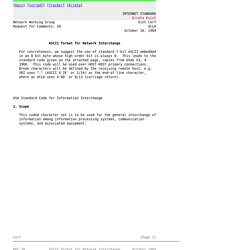
This leads to the standard code given on the attached page, copies from USAS X3, 4- 1968. This code will be used over HOST-HOST primary connections. Break characters will be defined by the receiving remote host, e.g. SRI uses ". " 1. This coded character set is to be used for the general interchange of information among information processing systems, communication systems, and associated equipment. RFC 20 ASCII format for Network Interchange October 1969 2. RFC 20 ASCII format for Network Interchange October 1969 3. RFC 20 ASCII format for Network Interchange October 1969 4. 4.1 Control Characters RFC 20 ASCII format for Network Interchange October 1969 4.2 Graphic Characters 5. 5.1 General 5.2 Control Characters 6.
Maschinencode. News for the open source professional. Guids, Grundlangen, Einführungen. Plancksches Wirkungsquantum. Das Plancksche Wirkungsquantum, oder die Planck-Konstante , ist das Verhältnis von Energie ( ) und Frequenz ( ) eines Photons, entsprechend der Formel .
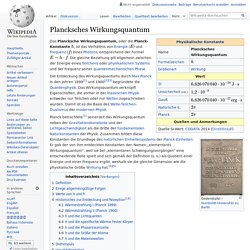
Die gleiche Beziehung gilt allgemein zwischen der Energie eines Teilchens oder physikalischen Systems und der Frequenz seiner quantenmechanischen Phase. Die Entdeckung des Wirkungsquantums durch Max Planck in den Jahren 1899[1] und 1900[2][3] begründete die Quantenphysik. Definition[Bearbeiten | Quelltext bearbeiten] Das Plancksche Wirkungsquantum.
HTML5Tutorial HTML5Tutorial. Galileo Computing - <openbook> - Bücher online lesen und herunte. Software Dokumentationen. Bitcoin. ▷ Vorname Feng: Herkunft, Bedeutung & Namenstag. Ascii Table - ASCII character codes and html, octal, hex and decimal chart conversion. Names of the Greek Gods. A Complete List of Greek Gods, Their Names & Their Realms of Influence There have been many Greek gods mentioned across thousands of stories in Greek mythology – from the Olympian gods all the way down to the many minor gods.
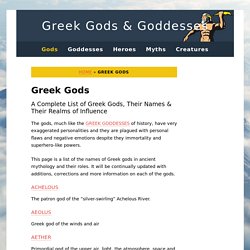
The gods, much like the Greek goddesses of history, have very exaggerated personalities and they are plagued with personal flaws and negative emotions despite they immortality and superhero-like powers. This page is a list of the names of Greek gods in ancient mythology and their roles. It will be continually updated with additions, corrections and more information on each of the gods. Achelous The patron god of the “silver-swirling” Achelous River. Aeolus Greek god of the winds and air Aether Primordial god of the upper air, light, the atmosphere, space and heaven.
Alastor God of family feuds and avenger of evil deeds. Apollo. All TLDs. Emoji. Ideograms or smileys used in electronic messages and webpages An emoji, created by the Noto project Emoji (Japanese: , ; Japanese: [emodʑi]; singular emoji, plural emoji or emojis[1]) are ideograms and smileys used in electronic messages and web pages.
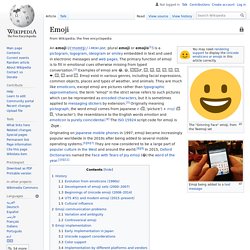
Emoji exist in various genres, including facial expressions, common objects, places and types of weather, and animals. They are much like emoticons, but emoji are actual pictures instead of typographics.[2] Originally meaning pictograph, the word emoji comes from Japanese e (絵, "picture") + moji (文字, "character"); the resemblance to the English words emotion and emoticon is purely coincidental.[3] The ISO 15924 script code for emoji is Zsye. History. The TCP/IP Guide. I know everyone hates ads.
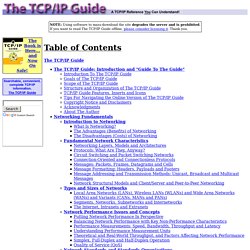
But please understand that I am providing premium content for free that takes hundreds of hours of time to research and write. I don't want to go to a pay-only model like some sites, but when more and more people block ads, I end up working for free. And I have a family to support, just like you. :) If you like The TCP/IP Guide, please consider the download version. It's priced very economically and you can read all of it in a convenient format without ads. If you want to use this site for free, I'd be grateful if you could add the site to the whitelist for Adblock.
Abbreviation Finder - Abkürzung Finder. Editors Choice. Notifications See all notifications All categories Marvin King Sveta Yaroshuk pollography Joan Le Jan Ryan Longnecker Stanislav Istratov Sebastian Tontsch Miguel Serra Elke Vogelsang John7 Jaime Penzellna Michael Underwood C/ marhraoui Ana Santl Babak Fatholahi Bob Cargin Photography David Uzochukwu Jesse Herzog Gyo Terauchi Max Gor Nicholas Ray raquel chicheri Geoffrey Greslin Visoot Uthairam. Free High-Resolution Photos. CC0 Image Portals (and liberally licenced image portals) Cheat Sheets in Deutsch (German) Google Fonts. Photographic Features. Data Visualization.
Interesting Search Engines.